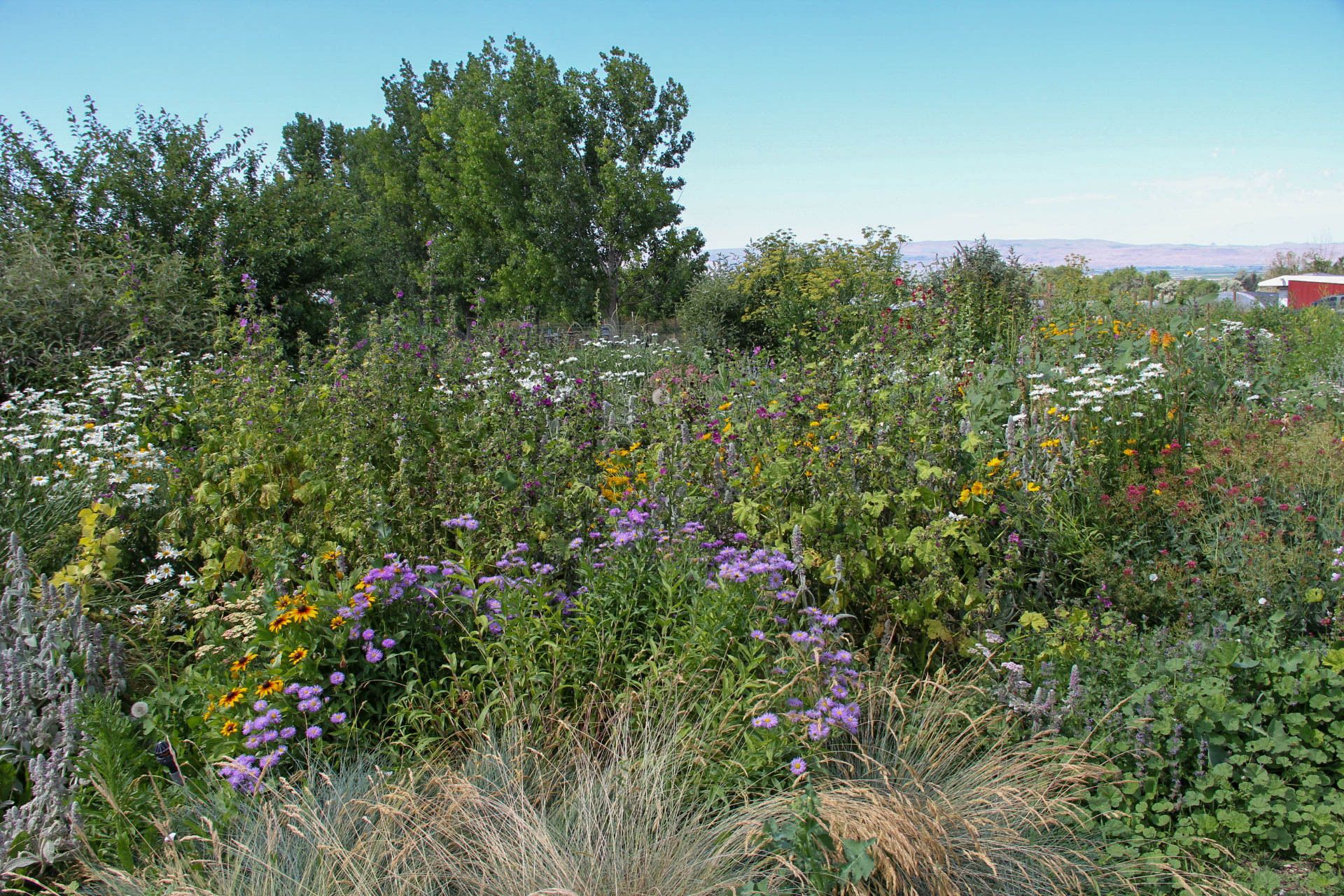ReWild Your Yard

What is ReWilding?
ReWilding emphasizes a shift away from traditional turfgrass lawns toward yard spaces that offer habitat and resources for pollinators and wildlife. This approach seeks to create landscapes that are not only ecologically beneficial but also visually appealing and enjoyable for people. The 'ReWild Your Yard' program at the Missoula County Department of Ecology & Extension has three primary goals:
1) Create Habitat & Harmony
- Select native plants that provide food and shelter for pollinators and wildlife.
- Use layered planting (trees, shrubs, flowers) for visual appeal and ecological function.
- Design with color, texture, and seasonal interest for a cohesive, beautiful look.
2) Build Resilient & Functional Spaces
- Incorporate drought-tolerant plants and rain gardens for water conservation.
- Improve soil health with mulch, compost, and minimal disturbance.
- Create defined spaces, such as seating areas or pathways (i.e. “cues to care”), to balance human use and wildlife needs.
3) Foster Sustainable Practices
- Reduce lawn areas and replace them with native ground covers or bee lawn.
- Avoid synthetic fertilizers and pesticides to protect soil and water quality.
- Choose low-maintenance, long-lived plants to reduce upkeep and resource use.
Preparing Your Site
The first step of ReWilding Your Yard is preparing your site. Below you can find resources that outline steps you can take to prepare your landscape for a ReWild project.
How to Kill Grass to Create a New Garden Bed - Iowa State Extension
Habitat Site Preparation - Xerces Society
Turning Grass into Gardens - University of Saskatchewan
Landscaping Ideas
If you are interested in taking steps to ReWild Your Yard, below are resources that offer guidance on getting started with planting native landscapes at home.
Creating Native Landscapes in the Northern Great Plains and Rocky Mountains - NRCS
Establishing Pollinator Meadows From Seed - Xerces Society
Pollinator Garden Planting Guide - Missoula Conservation District
About Landscape Mullets - Tufts University
A Guide to Creating Pollinator Gardens - Grow Wild MT
Native Species for Landscaping - Blackfoot Native Plants
Plug Planting Guide - Pipilo Native Plants
You can also visit our page about Gardening For Pollinators, which goes more in depth about how to perform garden maintenance while promoting pollinator health.
Keep an Eye on Your Landscape
Monitoring is a great way to tell how pollinator-friendly your yard really is. By observing what types of plants, pollinators, and wildlife are present, you can get a better sense of the diversity you have, and learn about what actions you may need to take to support even more biodiversity in the future.
Below are helpful resources for monitoring:
Habitat Assessment Guide for Pollinators In Yards, Gardens, and Parks - Xerces Society
A Beginner's Field Guide to Identifying Bees - Colorado State University Extension
Bumble Bees in Montana - Montana State Extension
Montana Bee Identification Guide - Montana State Extension
Bumble Bees of the Western United States - U.S. Forest Service
Quick Field Guide to Female Bumblebees in Montana - Xerces Society
Events
